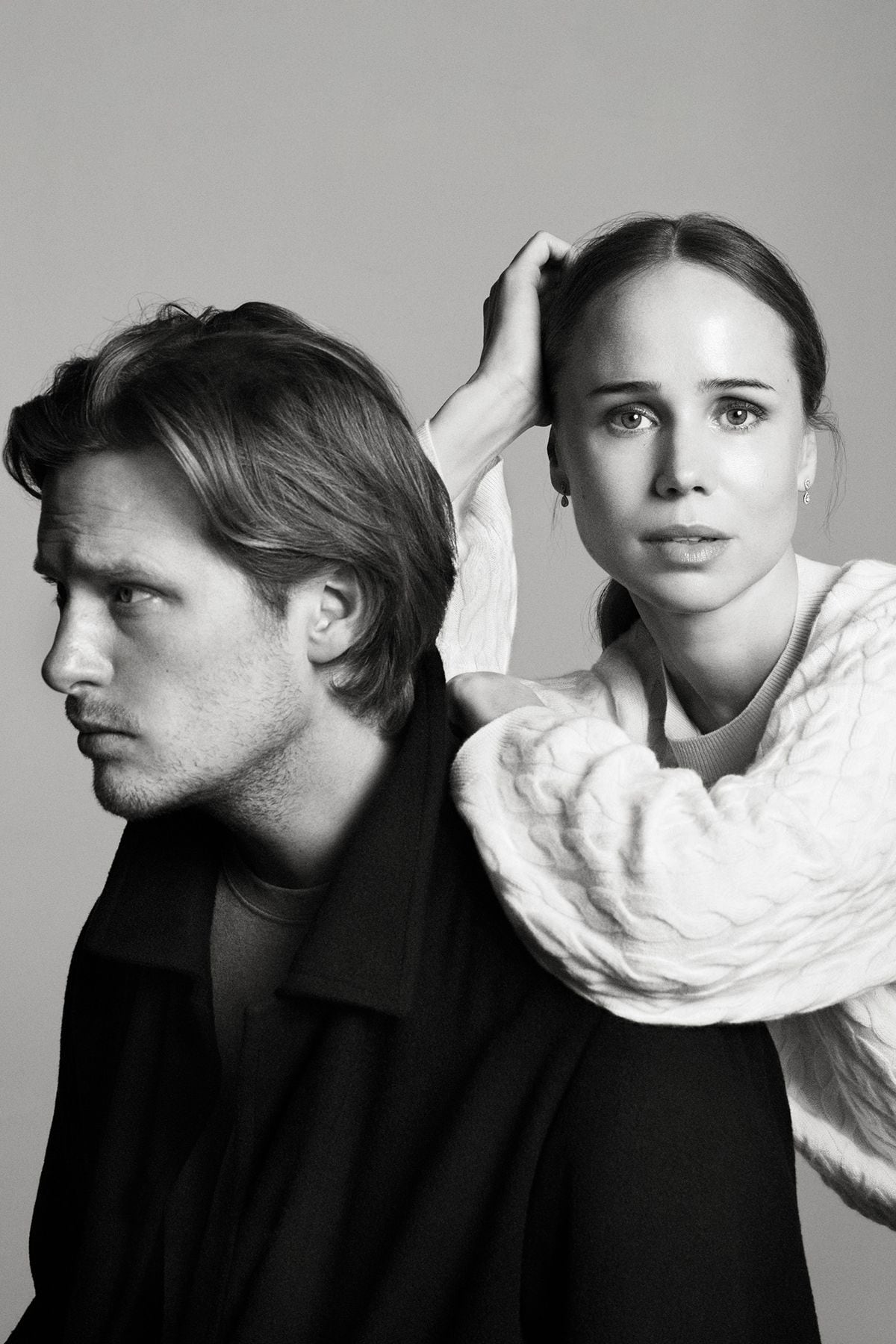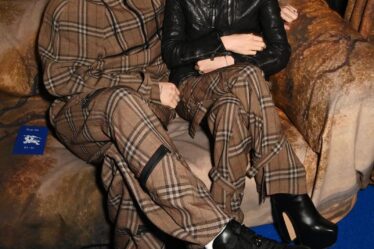
When Swedish husband-and-wife duo Elin Kling and Karl Lindman started their minimalist fashion brand in 2014, the broader industry was in the midst of a transformational shift.
Hot buzzy startups like Everlane, Reformation and soon Glossier were pioneering a new playbook reliant on venture capital funding, savvy branding, a direct-to-consumer sales model and high marketing spend. Meanwhile, in the luxury sphere, the worlds of streetwear and high fashion would soon collide, powered by the likes of Off-White and Vetements. A new Gucci, under the creative direction of Alessandro Michele, would catapult quirky maximalism into the zeitgeist. Logomania was about to become luxury’s driving force.
But Kling and Lindman had no interest in eschewing wholesale, raising millions in venture capital to funnel into marketing, or slapping logos all over their streamlined, functional designs — and they refused to compromise on their broader vision despite the fast-changing industry landscape. Their label Toteme was in some ways the antithesis of the trends that were then dominating the fashion and business scene.
The label’s approach has paid off. Last year, Toteme, which has been profitable since 2015, surpassed €100 million ($106.8 million) in annual sales, up from about €10 million before the pandemic. The brand now boasts a network of nine stores, with six more set to open over the next few months in hot spots like Melrose Avenue in Los Angeles and Mount Street in London. The company employs 120 team members across offices in London, New York and its headquarters in Stockholm.
New stores and product categories have helped fuel the brand’s recent explosive growth. But more broadly, like other female-designed labels like Khaite and The Row, Toteme’s quiet-luxury staples have benefited from a broader post-pandemic desire for sophisticated, elevated clothing that is still practical and easy to wear. Core pieces like $200 zip-cuff jersey leggings, $1420 cashmere coats and cult $1130 scarf jacket continue to resonate season after season.
“It’s such a brilliant, democratic, but strong fashion resource,” said Liane Wiggins, head of womenswear buying at Matches. “They hit the nail on the head everytime. They don’t reinvent the wheel, but increase the right amount of newness.”
As the nearly 10-year-old brand prepares to enter its teenage years, the label also plans to launch new categories like jewellery.
What Women Want to Wear
With Toteme, Lindman and Kling sought to build a Swedish fashion label that felt timeless. Lindman, a former art director at advertising agency Baron & Baron and Interview magazine, would look after branding, while Kling, who wrote a fashion blog “Style by Kling’’ before setting up Swedish fashion magazine StyleBy in 2011, would design the clothes. Shortly after launching their brand, the duo moved back to Stockholm from New York to begin building out a team. (Kling closed down her platform when Toteme launched to focus solely on the new venture.)
“We wanted to create a brand that was about defining sense of purpose and style, but also, we wanted it to be sort of layers of a woman’s wardrobe, so you could buy into a coat from one season, and then you could combine that with other products from the next season,” said Lindman.
Toteme would fill a gap in the saturated fashion sphere for a reliable, go-to brand that delivered stylish, functional clothing that was consistent from season to season, with pieces serving as “building blocks for our woman and her wardrobe,” Kling said. Quality was key — for many years the brand abstained from paid advertising so it could funnel more money into product development — as was a fair price-point that allowed women to buy into an elevated offering at the entry-level of the luxury segment.
“I wasn’t feeling necessarily that I was missing anything [in the market] in terms of product, it was more the curation of products. There was almost too much out there,” said Kling. “With each style that goes into the collection, I’m always questioning: How should you wear it? Why do you need it?”
For years, Toteme was content to operate somewhat under-the-radar, relying on word of mouth to drive brand awareness. But the laser focus on delivering high-quality, desirable clothes paid off, translating into a small but loyal customer base that shopped with the brand repeatedly. Sales may not have been exploding, but the business was growing steadily and profitable from an early stage.
Toteme did launch with its own e-commerce platform, building relationships directly with its consumers, but Kling and Lindman also saw wholesale as vital to getting the business off the ground, establishing a near 50-50 split between channels from the start that it still maintains today. For launch, they partnered with respected stockists like Net-a-Porter and the now-shuttered New York-based boutique The Line, bolstering a higher-end brand positioning while quickly getting their clothes in front of high-spending luxury customers.
At Matches, shoppers that buy Toteme are also shopping brands like Khaite, Loewe and The Row, said Higgins. Some customers will buy key Toteme pieces in multiple colourways over the course of years, she added. Outerwear, denim, silk shirts and trousers and bags sell particularly well.
“You’re so used to brands reaching a certain saturation point, but [Toteme] never does,” she said. “It always gives the customer a new reason to invest.”
From Startup to Global Brand
By 2019, the brand was ready to embark on its next stage of growth, hiring former McKinsey executive Johanna Andersson as CEO. In many ways, timing was on the brand’s side: it seemed there was an opening in the market for the very pared-down luxury wardrobe staples that Toteme was building a business around: Consumer fatigue around logos and maximalist fashions were starting to set in, and, the year prior, minimalist favourite Phoebe Philo exited Celine.
These positive market forces coupled with a global expansion push helped supercharge the business. Even amid the pandemic, sales continued to climb, thanks to a big bet on the Chinese market: In 2020, Toteme launched on T-mall, before rolling out four stores across Shanghai, Nanjing and Chengdu. The brand also has three stores in Seoul, South Korea.
Store openings and product expansion helped bolster sales, said Andersson, with newer categories like swimwear and bags, which launched last year, helping to introduce the brand to fresh audiences. Its striped turtleneck, whipstitch-trimmed scarf coat and T-lock bag have all become viral hits over the past few years, spawning copycat products across the internet. The bag in particular is a best seller at Matches, said Higgins. As well, the brand now finds itself perfectly suited for current fashion trends, as minimalist, “quiet luxury” pieces soar in popularity.
Yet Toteme still has a lot of unrealised potential, said Andersson: “The growth has been very organic: we haven’t over invested into marketing, we’re not everywhere, we’re a bit of an ‘insider brand,’ not everyone knows about Toteme,” she said. “We still have so much more to do…when it comes to expansion in channels, in categories, in geographies.”
The brand brought on its first investor, Altor, in May 2021, which took a minority stake in the business. But Lindman says that the company has no grand plans for an exit anytime soon. (The company declined to comment on terms of the deal.)
“Elin and I are it for the long run,” said Lindman. “We see this enormous potential with our business. We have no plans to stop being majority owners.”



